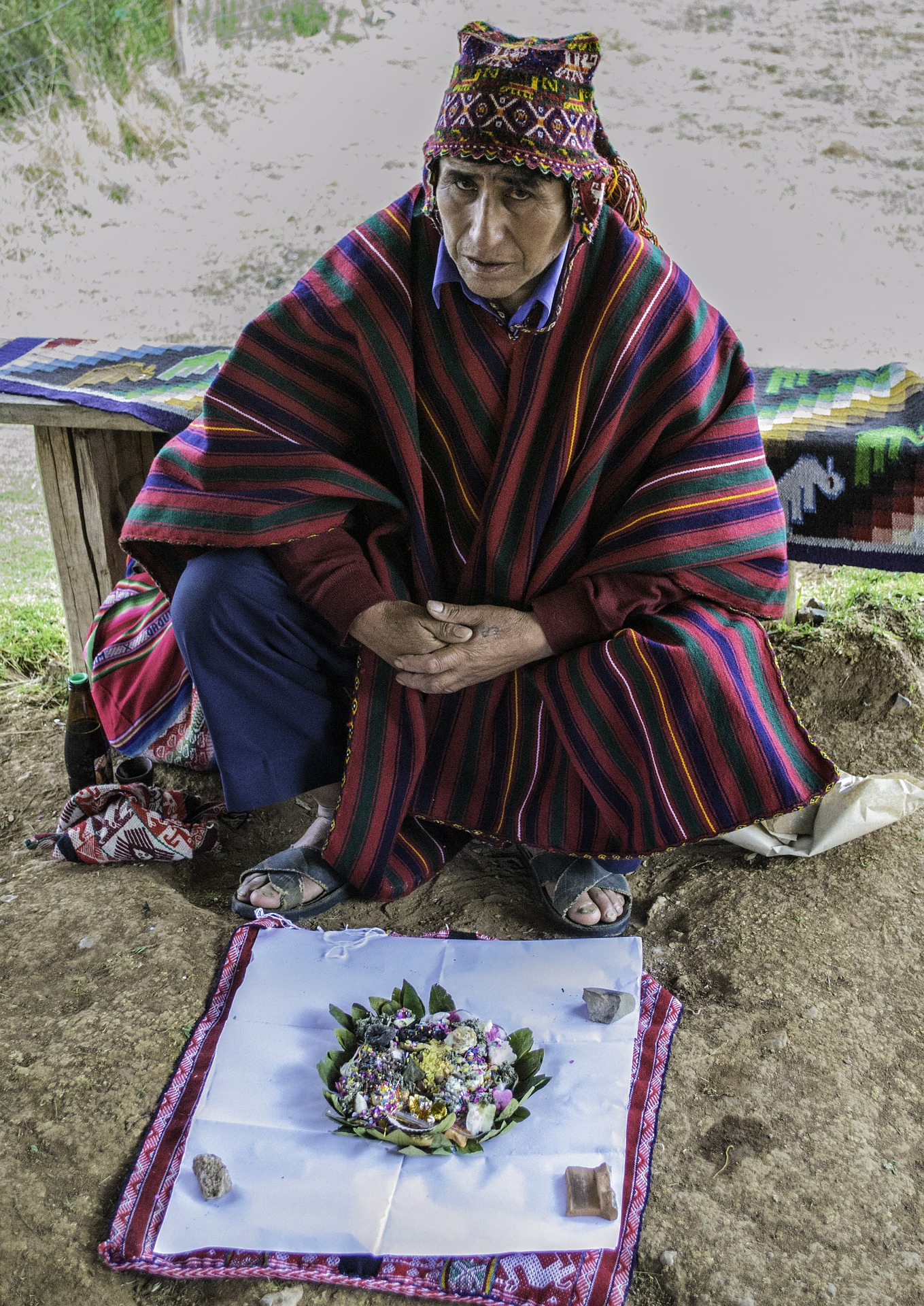Culture and treatment
 As you learned in the diagnosis part of this unit, culture can play a key role in the manifestation of symptoms. It is important that psychologists consider an emic approach to diagnostic, rather than simply applying their own cultural standards for diagnosis. It then follows that if this is important in diagnosis, culture must also play a significant role in the success of therapy. Cultural beliefs in a society influence the therapy process because they form a part of both the therapist's and the patient's definitions and understandings of the problem trying to be solved.
As you learned in the diagnosis part of this unit, culture can play a key role in the manifestation of symptoms. It is important that psychologists consider an emic approach to diagnostic, rather than simply applying their own cultural standards for diagnosis. It then follows that if this is important in diagnosis, culture must also play a significant role in the success of therapy. Cultural beliefs in a society influence the therapy process because they form a part of both the therapist's and the patient's definitions and understandings of the problem trying to be solved.
A counselor who takes on an etic perspective believes that disorders such as depression and the behaviours that come along with them occur the same way in every society. They believe that mental disorders are universal and all clients should and can be treated and diagnosed in the same manner.
A counselor who takes on an emic perspective believes that many factors come into play when diagnosing and treating a client especially in regards to their culture. Some factors can include cultural values, morals, and lifestyle.
In reality, when working in a diverse, global society - it is important to remember that there are cultural differences, but there are also many similarities. Therapists must engage with the never-ending tension between differences and universalities in abnormal behaviour. It is not the case that therapists must use either an etic or an emic approach, but that they are able to distinguish between the aspects of a disorder that appear to be universal and those that appear to be more embedded in a local culture.
Culture and therapy
Indigenous psychotherapy: These therapies are embedded within a culture and do not include anyone from outside the culture. They are carried out by someone who is sanctioned within the community to be a therapist. Indigenous healing encompasses therapeutic beliefs and practices that are rooted within a given culture - for example, heavy reliance on family and community networks, as well as spiritual and religious beliefs. These practices are difficult to transfer to a different cultural setting.
Cross-cultural psychotherapy: Also known as "intercultural counseling" or "multicultural therapy." This is when the therapist is from a different culture from the patient. The therapist adapts therapeutic methods that have been shown to be effective to meet the cultural needs of the patient.
ATL: Thinking critically
Watch the following video in which Andrew Solomon discusses therapy in two African communities.
Reflect on the therapy in Senegal. In what ways is this similar to approaches that are used in Western society?
What do you think about the comments made by the Rwandans to Andrew? What can you tell about the Rwandan culture from this conversation? About Western culture?
Indigenous psychotherapy
Indigenous therapies reflect the values and practices of a culture. The study of indigenous psychotherapy is difficult for several reasons. Often indigenous therapies require no formal training. It is often practiced within families or communities and is not open to people outside of the community. There is a lack of standardized procedures that could be evaluated for effectiveness. As a result, there is a lack of reliable quantitative results of these practices that could be studied through meta-analysis.
There are, however, exceptions to this. Morita therapy is a therapy that is rooted in fundamental beliefs and values in Japanese culture. These include:
- Feelings are natural responses to our life circumstances and we need not try to “fix” or “change” them.
- Dogmatic thinking - that is, perfectionism and high demands on oneself - hinder recovery. Liberation from self-centeredness leads to healing.
- Isolation and rest, rather than verbal interaction, is essential to recovery.
The therapy usually begins with a period of rest before counseling begins. Counseling focuses on changing one's perspective toward the larger community and away from oneself. It also asks the patient to practice mindfulness through meditation. The focus of the therapy is recovery, not the origins of the disorder.
Ando et al (2009) wanted to determine the effect of mindfulness-based meditation therapy on anxiety and depression in Japanese patients undergoing anti-cancer treatment. The 28 patients participated in two sessions of meditation therapy. They were instructed to practice at home between sessions. The study used a pre-test / post-test design. Patients completed questionnaires before and after the treatment. The results showed that anxiety and depression levels decreased significantly. The researchers argue that a sense of spiritual well being is what resulted in lower levels of both anxiety and depression.
Spirituality or religious practices are often an integral part of indigenous therapies. For example, in Malaysia, time for prayer and focusing on verses of the Koran that address “worry” are some techniques that have made psychotherapy culturally relevant. Sometimes, in therapy with Chinese clients, verses from Taoist writings that highlight main principles, such as restricting selfish desires, learning how to be content, and learning to let go, are read and reflected on by the client. This approach is known as Chinese Taoist cognitive psychotherapy (CTCP).
Research in psychology: Zhang et al (2002)
 Zhang et al (2002) carried out a study to test the efficacy of CTCP. 143 Chinese patients with Generalized Anxiety Disorder were randomly assigned to one of three treatment groups: CTCP only, benzodiazepines only, or a combination of the two. Patients were evaluated before the study, after one month, and then again after six months of treatment. After the first month, they found that benzodiazepines produced better results. However, after six months the patients in the CTCP group had a greater reduction of symptoms and those in the combined treatment group had the greatest symptom reduction with a low chance of relapse. They found that CTCP helped patients to reduce perfectionism and improve their coping skills. Although the treatment was slower, the treatment appears to be more successful than drug treatment.
Zhang et al (2002) carried out a study to test the efficacy of CTCP. 143 Chinese patients with Generalized Anxiety Disorder were randomly assigned to one of three treatment groups: CTCP only, benzodiazepines only, or a combination of the two. Patients were evaluated before the study, after one month, and then again after six months of treatment. After the first month, they found that benzodiazepines produced better results. However, after six months the patients in the CTCP group had a greater reduction of symptoms and those in the combined treatment group had the greatest symptom reduction with a low chance of relapse. They found that CTCP helped patients to reduce perfectionism and improve their coping skills. Although the treatment was slower, the treatment appears to be more successful than drug treatment.
Multicultural approaches
Since it is not always possible to transfer the therapeutic techniques from one culture to another, clients of a different culture often have to use the therapy that is available in the dominant culture. This can be problematic. For example, let's say that an Asian client goes to a therapist who provides CBT in order to deal with feelings that she is bringing shame on her family by dropping out of medical school. If the therapist tells her that she cannot live her life solely to meet the expectations of others, she may never go back for another session. She may feel that she is not culturally understood and that therapy is pointless.
When there is a large community of a cultural group, it is possible that they may seek out help from within their community. Dein and Sembhi (2001) carried out a case study of 25 South Asian psychiatric patients in London. They found that 28% of the sample went to a traditional healer as a supplement to the psychiatric care they received in the UK. This may be the result of one's level of acculturation. Older patients were much more likely to seek out a traditional healer compared to younger patients.
A meta-analysis of 76 studies of Western therapy that had been adapted to meet the cultural needs of clients was carried out by Griner and Smith (2006). The findings indicate a moderately strong benefit of culturally adapted interventions. They were four times more effective than non-adapted strategies applied to a range of clients from a variety of cultural backgrounds. They also found that interventions conducted in clients' native language were twice as effective as interventions conducted in English.
Research in psychology: Marian and Neisser (2000)
 Being able to talk to your therapist in your native language appears to play an important role in the success of therapy.
Being able to talk to your therapist in your native language appears to play an important role in the success of therapy.
Marian & Neisser (2000) carried out an experiment to study the role of one's native language in cue-dependent memory. They wanted to find out to what extent are memories easier to access when we attempt to access them in the language in which they happened.
Their sample was made up of 20 students who had immigrated to the US in their early teens. They were all bilingual in Russian and English. The mean age of the sample was 21.8 years old.
Each participant was asked to recall autobiographical information that had happened either before they immigrated to the US - that is, when they still lived in Russia - or after they immigrated to the US. In order to do this, the participants were given a series of prompts to react to.
Set 1: summer, neighbours, birthday, cat, doctor, getting lost, frightened, bride
Set 2: snow, friends, holiday, dog, blood, contest, laughing, newborn
They were either asked the Set 1 words in Russian or English. Set 2 would then be asked in the other language. The study was also counter-balanced. Half were asked a set of words in English first and then the other set in Russian. The other half began with the Russian words and then the English words. This was to control for order effects.
In addition, for some of the words they were asked for memories from childhood (when they were still in Russia) and for the other half they were asked for stories from their teenage years and early adulthood (after immigration)
The participants were asked to tell the first story that came to mind. They could speak either Russian or English in response.
The results supported the hypothesis of language-dependent recall: Participants retrieved more experiences from the Russian-speaking period of their lives when interviewed in Russian and more experiences from the English-speaking period of their lives when interviewed in English.
This has implications for therapy. It may be easier for patients to recall events from their past in their native language than in their new language, regardless of their level of language proficiency.
Access to care
On November 9, 2004, the Chinese-American community was shocked to learn that one of their leading historical writers, Iris Chang, had committed suicide as a result of her continued depression. Her body was found in her car in Los Gatos, California, with a self-inflicted gunshot wound to her head. At 36 years old, she was well known for her book The Rape of Nanking.
Chang's death led many in the Chinese American community to begin discussing their approach to US mental health services. A report by Leong and Kalibatseva (2011) outlines the key barriers for this community.
Cognitive barriers: The way people think about treatment is influenced by culture. Among several ethnic minorities - including Asian, Hispanic, and African Americans - it is often believed that mental illness can be treated or overcome through willpower and endurance of hardship without complaint, rather than by seeking external, professional psychological help Some research indicates that Asian Americans are more likely than Caucasian Americans to believe that mental health was enhanced by exercising self-control.
Affective barriers: Many collectivistic cultures, like Chinese-Americans, avoid seeking help in order to avoid the stigma and shame of mental illness. Since the family name and “face” are very important, Asian Americans may decide to protect the family’s reputation by not openly seeking help even though they may be having psychological difficulties.
Sociocultural barriers: The disclosure of personal problems or family dysfunctions to strangers - for example, a therapist - is highly discouraged in collectivistic cultures, especially in cultures that place a strong emphasis on maintaining group harmony and firm in-group versus out-group boundaries.
Some of the sociocultural barriers are less theoretical and more practical. Often immigrants lack knowledge or awareness of the available services. Even if they are aware of what is available, mental health services may be unaffordable for individuals with a low socioeconomic status. Clients with lower socioeconomic status may not be able to spend time receiving care because they need to work multiple jobs and/or take care of family members. Finally, low English proficiency of immigrants and the scarcity of bicultural and bilingual mental health professionals also act as a barrier to seeking help.

 IB Docs (2) Team
IB Docs (2) Team

 A country's history can also play a role in how the culture approaches mental health care.
A country's history can also play a role in how the culture approaches mental health care.